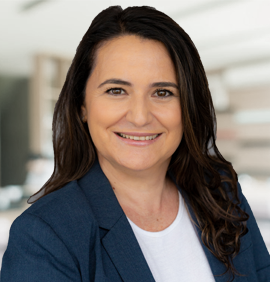 Universidade de São Paulo
Universidade de São Paulo
Sobre a palestrante
Liane M. Rossi holds a BS degree in Chemical Engineering (UFRGS, Brazil, 1994) and a PhD degree in Chemistry (UFSC, Brazil, 2001). After postdoctoral research experience in Brazil and the USA, in 2004, she joined the Institute of Chemistry at the University of São Paulo (USP) and became a Full Professor in 2016. Her research interests in the field of chemistry and catalysis include novel approaches for the synthesis of supported metal nanoparticles with controlled size, morphology and surface properties, catalyst recovery and recycling, new reactivity patterns at metal-ligands interfaces, bimetallic and hybrid catalysts, and the concepts of green chemistry for selective transformations. The main catalytic processes currently under study are selective hydrogenations and oxidations, biomass conversion into chemicals, and CO2 capture and conversion. She currently serves as Coordinator of the CCU Program at the Research Centre for Greenhouse Gas Innovation (RCG2I), sponsored by FAPESP/SHELL/USP (São Paulo, Brazil). She is the author or co-author of more than 130 papers published in indexed peer-reviewed scientific journals. She is an Associate Editor at ACS Sustainable Chemistry and Engineering and an Editorial Advisory Board Member at ACS Catalysis (American Chemical Society) and Chemistry Select (ChemPubSoc and Wiley). She is a member of the Brazilian Chemical Society (SBQ), Brazilian Catalysis Society (SBCAT), Royal Society of Chemistry (RSC) and American Chemical Society (ACS).
Palestra: Pushing the boundaries of heterogeneous catalysis using organic ligands
Resumo: Heterogeneous catalysis is a vibrant field of research and a fantastic example of the importance of connecting chemistry, engineering, and the chemical and petrochemical industry. The result was the development and application of catalytic processes, over more than a century, that improved our quality of life. The field covers the production of goods, such as fuels, polymers, bulk chemicals, and fertilizers, and has an essential role in pollution control and finding solutions to fight climate change and to energy transition. Most heterogeneous catalysts are based on metal surfaces or dispersed metals on oxides and carbon-based support materials, ranging from bulk to nanoparticles or single-atoms. What is the role of organic ligands in this scenario? Until recently, the only role of ligands was either acting as a catalyst precursor or poisoning the metal surface and eventually contributing to an improved selectivity. In this talk, we will discuss examples from our research group that we believe push the boundaries of classical heterogeneous catalysis. In the first example, we will show that the presence of organic ligands (N-containing ligands and P-containing ligands) can improve the catalytic activity, providing a different mechanism of activation of H2 molecules, on gold and also extended to other metals. In the second example, we will show that the usually undesired deposition of carbon of the catalyst surface, via pyrolysis or under reaction conditions, can also play positive role in the overall catalyst performance.


